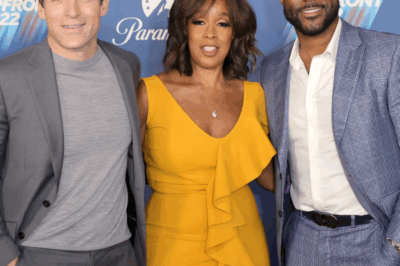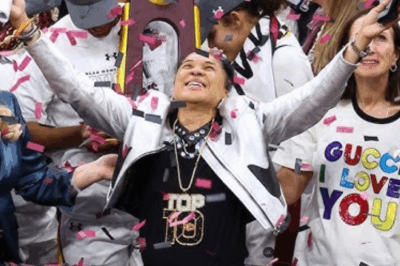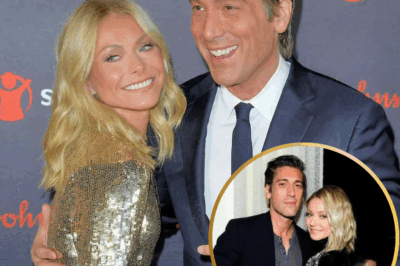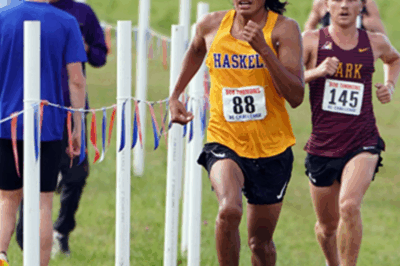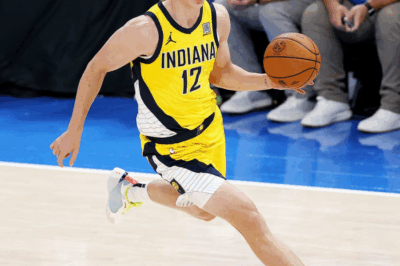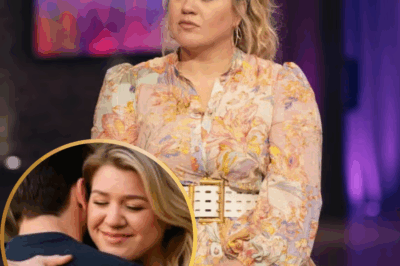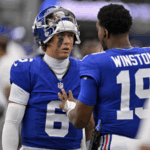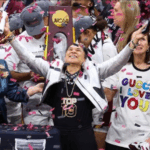Analyzing the Controversy: The Perception of Jaxon Dart’s Confidence and Race in the NFL
In recent weeks, a heated debate has emerged within the sports community and broader social discourse surrounding the young quarterback Jaxon Dart, a promising rookie for the New York Giants.
The controversy centers on perceptions of Dart’s swagger, confidence, and overall demeanor on and off the field, with some critics suggesting that his displays of self-assurance are being tolerated or even celebrated primarily because of his race.
This narrative raises important questions about race, privilege, media portrayal, and the double standards that often influence public perception of athletes in the National Football League (NFL) and American sports culture at large.
The Rise of Jaxon Dart: A Promising Rookie

Jaxon Dart, a talented quarterback drafted by the New York Giants, has quickly garnered attention for his impressive skill set, leadership qualities, and charismatic presence.
Coming into the league, Dart was seen as a promising talent with the potential to become a franchise quarterback. His athleticism, arm strength, and football IQ have impressed coaches, teammates, and fans alike.
From the moment Dart stepped onto the field during preseason games and training camp, he exhibited a level of confidence that many associate with veteran players.
His swagger—an aura of self-assurance that players often cultivate to intimidate opponents and motivate teammates—has become a defining feature of his persona. For many, this confidence is a sign of maturity, resilience, and readiness to lead a team.
However, amidst the praise, a subset of observers has raised concerns about the perception of Dart’s confidence, suggesting that it may be viewed differently because of his race.
Critics argue that while similar displays of confidence by athletes of different racial backgrounds are often celebrated, Dart’s demeanor is being scrutinized through a different lens—one tinged with racial bias and stereotypes.
The Intersection of Race and Sports: Historical Context
To understand the controversy fully, it is essential to consider the historical context of race and perception in American sports.
Historically, Black athletes have often been stereotyped and subjected to double standards regarding their behavior, confidence, and emotional expression.
For decades, Black players exhibiting assertiveness or swagger have been either criticized, dismissed, or labeled as overly aggressive, while their white counterparts displaying similar traits are often praised for their leadership and charisma.
This double standard persists in various sports leagues, including the NFL, where racial biases influence how players are perceived, evaluated, and treated by media, fans, and even team management.
The concept of “swagger” itself has racial connotations—often associated with Black athletes, especially in basketball and football—who are celebrated for their self-confidence and flamboyance.
Conversely, when white players display similar traits, they are frequently described as “leader-like,” “confident,” or “poised.”
In this context, critics of Dart’s confidence argue that there is a tendency to scrutinize or diminish the demeanor of Black athletes, perceiving their confidence as arrogance or overcompensation, rather than as natural leadership qualities.
The narrative that Dart’s swagger is “only being tolerated because he is white” taps into this broader history of racial stereotyping and bias within American sports culture.
Media Portrayal and Public Perception

Media coverage plays a crucial role in shaping public perception of athletes, and Jaxon Dart’s case is no exception. Some commentators and sports analysts have highlighted Dart’s confidence as a positive trait, emphasizing his leadership potential and mental toughness.
Others, however, have questioned whether his demeanor is appropriate for a rookie, implying that he is “overconfident” or “arrogant” without considering the broader context.
Critics who suggest that Dart’s confidence is being tolerated because of his race often point to instances where similar behaviors by Black athletes have been met with harsher criticism or skepticism.
This selective perception feeds into a narrative that racial bias influences how players are judged, both in the media and by fans.
Social media amplifies these debates, with some users defending Dart’s confidence as an essential part of his game and personality, while others argue that the scrutiny he faces is rooted in racial bias.
These discussions highlight the ongoing struggle to separate genuine athletic talent and leadership qualities from racial stereotypes and biases.
The Role of Society and Culture in Shaping Perceptions
Beyond media narratives, societal and cultural factors significantly influence how athletes like Dart are perceived. American society has a long history of racial stereotypes that extend into sports, affecting perceptions of authority, masculinity, and leadership.
In many cases, Black athletes are expected to be humble, reserved, and team-oriented, while white athletes are often granted more leeway to display confidence and individuality. This disparity affects how their behavior is interpreted and accepted.
Furthermore, the concept of “toxic masculinity” and traditional notions of leadership often valorize assertiveness and dominance, traits that are sometimes racialized in sports.
The question arises: does Dart’s confidence align with these societal expectations, or is it being judged differently because of his race?
The Impact of Racial Bias on Young Athletes

The controversy surrounding Dart’s perceived confidence has broader implications for young athletes, especially those of color.
If Black players are often criticized or labeled negatively for displaying confidence, it can discourage authenticity and self-expression, impacting their mental health and performance.
Conversely, when white athletes exhibit similar traits, they are often celebrated, reinforcing racial stereotypes and double standards. This dynamic perpetuates inequality within sports and society, influencing how young athletes view themselves and their potential.
Moving Toward Fairness and Equity in Sports
Addressing these issues requires a conscious effort from media, fans, teams, and the league itself to recognize and challenge racial biases. This includes:
Promoting diverse and nuanced coverage of athletes that avoids stereotypes.
Encouraging conversations about race, perception, and leadership in sports.
Supporting young athletes in expressing themselves authentically without fear of racial bias.
Implementing policies that foster equity and inclusion within leagues and organizations.
Conclusion: The Need for Critical Reflection
The debate over Jaxon Dart’s confidence and the racial undertones attributed to it underscores the ongoing challenges of racial bias in American sports.
While Dart’s talent and leadership qualities are undeniable, the way society perceives and judges his demeanor reveals deeper issues related to race, stereotypes, and cultural expectations.
As fans, media, and stakeholders continue to engage with these conversations, it is vital to approach them with critical awareness and a commitment to fairness.
Recognizing and dismantling racial biases not only benefits athletes like Dart but also contributes to a more equitable and inclusive sports culture—one that celebrates authenticity, leadership, and excellence regardless of race.
News
SHOCKING ALLEGATION: Insiders reveal Gayle King is furious, saying Tony Dokoupil “sabotaged her career.” You won’t believe what happened behind the scenes.
SHOCKING ALLEGATION: Insiders reveal Gayle King is furious, saying Tony Dokoupil “sabotaged her career.” You won’t believe what happened behind…
The Unfinished Business: Inside South Carolina’s Unrelenting Quest for College Basketball Redemption and the 2025 National Championship
The Unfinished Business: Inside South Carolina’s Unrelenting Quest for College Basketball Redemption and the 2025 National Championship In the sweltering…
Forget the speculation. The wait is over, and what Kelly Ripa and David Muir unveiled has left everyone speechless. This is bigger than we ever imagined.
Forget the speculation. The wait is over, and what Kelly Ripa and David Muir unveiled has left everyone speechless. This…
Celebrating Athletic Excellence: Haskell Indian Nations University’s Jaiven Hale Secures First Place at the Prestigious Billy Mills Cross Country Event
Celebrating Athletic Excellence: Haskell Indian Nations University’s Jaiven Hale Secures First Place at the Prestigious Billy Mills Cross Country Event…
Johnny Furphy: A Promising Talent Ahead of Tonight’s Preseason Game at Gainbridge Fieldhouse
Johnny Furphy: A Promising Talent Ahead of Tonight’s Preseason Game at Gainbridge Fieldhouse As the anticipation builds for tonight’s highly…
Kelly Clarkson Officially Reveals the Identity of Her New Partner: “It’s Time You All Met Him” — Fans Are Stunned by the Surprise Announcement
Kelly Clarkson Officially Reveals the Identity of Her New Partner: “It’s Time You All Met Him” — Fans Are Stunned…
End of content
No more pages to load

